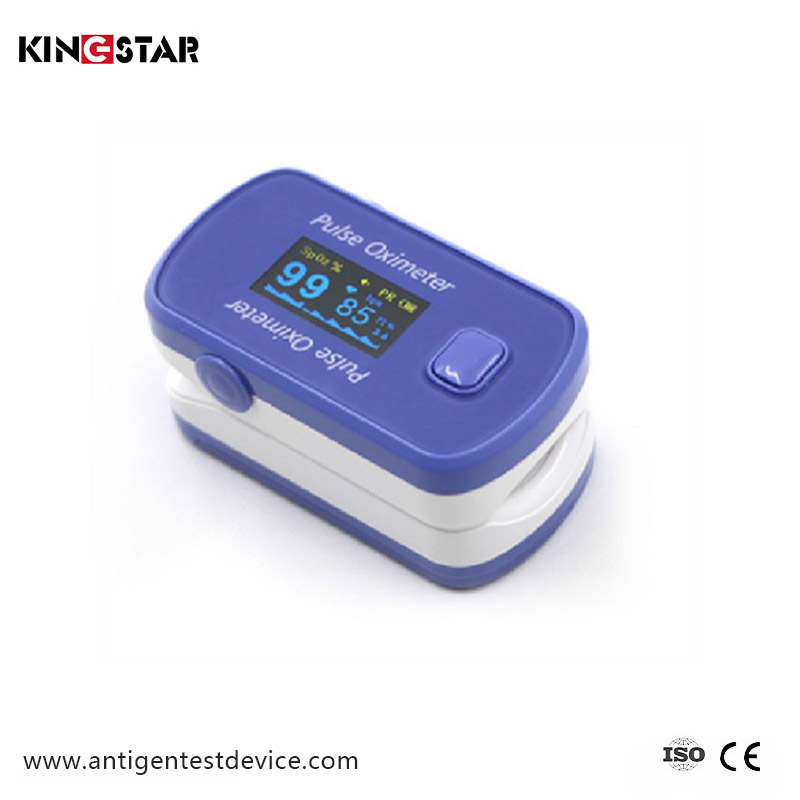What Exactly Separates a Medical Grade Oximeter from a Consumer One
2025-11-20
For over two decades in the tech industry, I've seen countless gadgets promise the world. But when it comes to health tech, the stakes are infinitely higher. I've watched the growing interest in personal health monitoring, especially with devices like the Oximeter. Many people purchase one, only to be confused by the readings or unsure of its reliability. This often stems from a fundamental misunderstanding between the two main categories of these devices. So, let's clear the air. What truly is the difference between a medical-grade pulse Oximeter and a consumer-grade one? It’s not just about price; it’s about purpose, precision, and the rigorous standards behind them.
Why Should You Care About Oximeter Accuracy
An Oximeter measures your blood oxygen saturation (SpO2) and pulse rate. For a generally healthy person using a device for wellness insights, like checking their stats after a workout, a small margin of error is acceptable. However, for individuals with chronic cardiopulmonary conditions like COPD or asthma, precise data is critical for managing their health. A few percentage points can be the difference between stability and a serious health event. This is where the divide between consumer and medical-grade units becomes vitally important. The peace of mind that comes with a validated device is something I always emphasize.
What Defines a Medical-Grade Oximeter
Medical-grade oximeters are classified as regulated medical devices. This isn't just a marketing term; it's a legal designation. To earn this, the device must undergo extensive validation and testing to meet stringent standards set by bodies like the FDA in the US or the CE-Mark in Europe. Think of it as the difference between a kitchen scale and the calibrated scale at a doctor's office. Both measure weight, but only one is trusted for medical decisions. The core of a medical-grade device is its proven accuracy across a wide range of conditions, including low perfusion (poor blood flow) and on patients with varying skin tones. This is a cornerstone of the KINGSTAR Pro series, which is engineered specifically for clinical reliability.
Let’s break down the technical parameters that set them apart:
-
Accuracy: Medical-grade oximeters typically have a SpO2 accuracy of ±2% under ideal conditions, and they must maintain this accuracy across a broader range (e.g., 70%-100%).
-
Clinical Validation: They are tested in clinical trials against gold-standard blood gas analysis.
-
Low Perfusion Performance: They are designed to provide accurate readings even when a patient's blood circulation is weak.
-
Motion Artifact Resilience: Advanced algorithms minimize errors caused by slight hand movements.
Can a Consumer Oximeter Meet My Health Needs
Consumer oximeters are fantastic tools for general wellness and fitness tracking. They are not, however, designed for medical diagnosis or to manage chronic diseases. They are considered "for informational use only." The primary advantages are their affordability, portability, and user-friendly design. They are perfect for a curious athlete or someone wanting to casually monitor their vitals during travel. However, their performance can be inconsistent. Factors like cold fingers, nail polish, or movement can significantly skew the results. While brands like KINGSTAR offer consumer-friendly models that are incredibly durable and easy to read, we are always transparent about their intended use.
How Do the Specifications Compare Side-by-Side
This table provides a clear, professional comparison of the typical specifications you can expect.
| Feature | Medical-Grade Oximeter | Consumer Oximeter |
|---|---|---|
| Regulatory Status | FDA Cleared, CE-Marked | For Wellness/Fitness Use Only |
| SpO2 Accuracy | ±2% (70%-100%) | May vary, often ±2% or ±3% in a narrower range |
| Clinical Validation | Required and documented | Not required |
| Low Perfusion Performance | Excellent, down to low pulse strengths | Limited, may fail to read in cold conditions |
| Display | Often includes Plethysmograph (waveform) | Typically numeric values only |
| Intended Use | Medical monitoring and diagnosis | General wellness and fitness tracking |
Why Would KINGSTAR Invest in Both Categories
You might wonder why a brand would operate in both spaces. At KINGSTAR, our philosophy is about providing the right tool for the right need. Our medical-grade line, like the KINGSTAR ProMed, is built for healthcare professionals and patients who require uncompromising accuracy. Simultaneously, our consumer line, like the KINGSTAR Fit, is designed for everyday users who value reliability and simplicity in a wellness context. This dual focus allows us to apply our engineering expertise across the spectrum, ensuring that no matter which product you choose, you're getting a device crafted with a deep understanding of pulse oximetry. Choosing the correct Oximeter is the first step toward effective health monitoring.
The choice ultimately hinges on your specific needs. Are you tracking general wellness, or do you require clinical-grade data for a health condition? Understanding this distinction empowers you to make an informed decision. We are confident that our range of solutions has the right fit for you. If you are a healthcare provider, distributor, or an individual with specific medical monitoring needs, we invite you to learn more about our certified products. Don't hesitate to reach out with your requirements. Contact us today for a direct consultation and let us help you find the perfect health monitoring solution.




